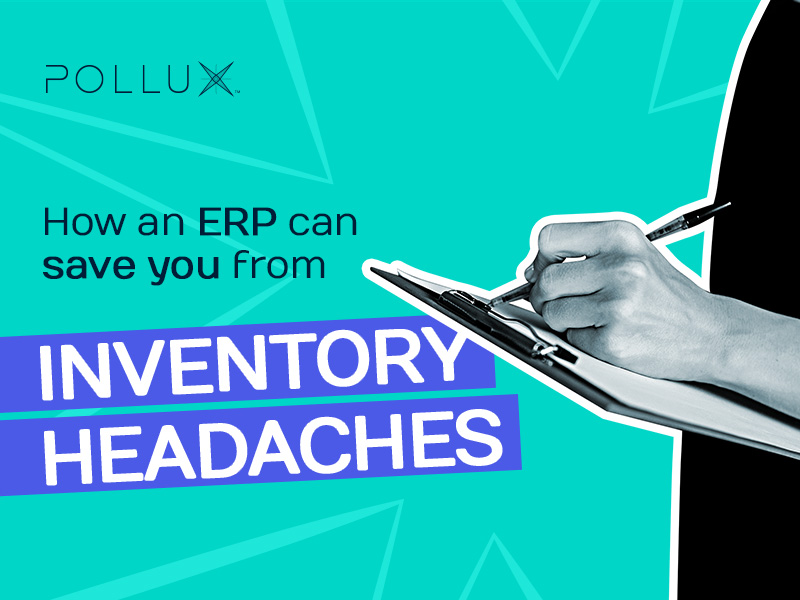Inventory management is one of those make-or-break parts of any business that deals with physical products. But when it’s handled manually or with scattered tools, human errors start sneaking in—causing unnecessary costs, missing products, unhappy customers, and bad business decisions. That’s where an ERP (Enterprise Resource Planning) system comes in: a game-changing tech solution that can totally upgrade how you manage your stock.
1. Real-time inventory updates—no more guesswork
One of the biggest slip-ups in inventory is incorrect or outdated data. An ERP keeps your stock levels updated in real-time with every item that goes in or out. That means no duplicate entries, no messy spreadsheets, and no “wait, we’re out of that?” moments. You’ll always have visibility into what you have, what you need, and what’s moving.
For businesses that operate across multiple warehouses or channels, this real-time visibility becomes even more essential. A centralized view ensures that you’re not flying blind, which is often what leads to costly miscalculations or emergency stock replenishments.
2. Bye-bye to repetitive, error-prone tasks
Copy-pasting between sheets, manually counting inventory, and juggling multiple systems? Yeah, that’s a recipe for mistakes. ERPs handle the boring stuff—auto-generating reports, restocking alerts, and flagging slow movers—so your team can focus on smarter decisions instead of data entry.
These automations not only reduce errors, they also save serious time. And in business, time really is money. Instead of spending hours fixing spreadsheet errors or tracking down lost items, your team can spend time analyzing trends, building forecasts, or improving service.
3. Full traceability, from A to Z
When something goes wrong, it’s key to know exactly where the issue started. ERPs give you a full audit trail—every step from purchase to delivery (and returns, too). That means faster fixes, better insights, and fewer repeat mistakes.
With traceability, you can quickly identify patterns in shrinkage, misplacements, or damaged goods. It empowers you to ask the right questions: Is this a supplier issue? A warehouse handling problem? An inventory count mismatch? With data to back you up, solutions are faster—and smarter.
4. Role-based access keeps things tight
A lot of errors happen when the wrong people touch the wrong part of the system. ERPs let you define who gets access to what, so only trained, authorized users can make changes. Less confusion, more control.
This also helps maintain accountability. When users have access based on their roles, you know exactly who did what, when, and why. It eliminates the blame game and replaces it with responsibility and transparency—something every growing business needs.
5. Everything connected, nothing missed
Disconnection between teams is another common source of chaos. Sales might sell something that’s already out of stock. Purchasing might reorder items that are actually sitting in the back of the warehouse. With an ERP, inventory is synced with sales, purchasing, logistics, and finance—everyone’s working off the same, up-to-date info.
This level of integration is especially valuable in fast-paced industries where decisions need to be made on the fly. No more waiting around for a status update. Everyone—from your sales reps to your supply chain team—can move in sync.
Where Pollux Comes In
Pollux is the ERP built for small and mid-sized businesses that want a no-hassle, all-in-one, fully online solution. We make inventory management smooth, automated, and way less stressful. With Pollux, you get:
- Tracking of inventory ins and outs
- Real-time reports that actually make sense
- Role-based access so everyone stays in their lane
- Complemented with sales, purchasing, and finance tools
But what really sets Pollux apart? It’s simple: we’re designed for business owners who don’t have time for complicated systems. Our platform is intuitive, easy to set up, and offers personalized onboarding and support every step of the way. You don’t need a full IT department to get started—just your ambition and a need to run things smarter.
Bringing in an ERP doesn’t just level up your inventory—it’s a smart move to cut down on human error, streamline your ops, and keep things running like a well-oiled machine. In a world where speed and accuracy matter more than ever, having a tool like Pollux on your side could be the difference between just getting by and truly thriving.
So if you’re tired of second-guessing your inventory data or patching up manual errors, it might be time to give Pollux a shot. Your future self (and your bottom line) will thank you.



